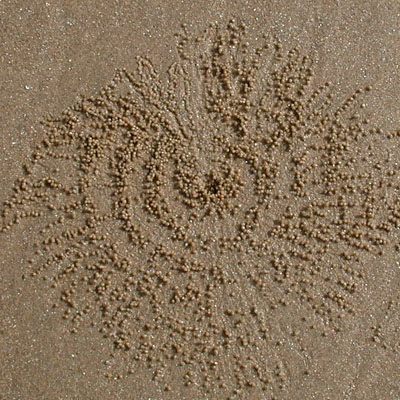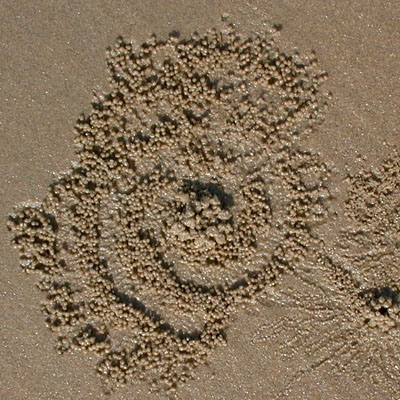 |
 |
| Target | Spiral |
 |
 |
| Target | Spiral |
Patterns are everywhere.
The wonderful patterns formed by the packing of atoms into crystal lattices are readily understood in terms of minimizing the energy of interaction (or other appropriate thermodynamic potential at nonzero temperatures).
The regular spatial structures in systems that are driven away from thermodynamic equilibrium by the injection, transport and dissipation of energy, cannot be understood so easily. The study of these systems goes under the name of "pattern formation" (better, but rather a mouthful: "pattern formation in systems far from thermodynamic equilibrium"). The phenomenon is ubiquitous in diverse systems: the classic instabilities of fluid dynamics such as the Rayleigh-Benard instability in a convecting fluid, the Taylor instability in the Couette flow between rotating cylinders, and the Kelvin-Helmholtz instability in fluid shear layers; the "Turing instability" in reacting and diffusing chemicals and perhaps living systems; optical and mechanical instabilities; and many other examples.
The ubiquity of the phenomenon of pattern formation leads to the search for theoretical formulations that unify the discussion of the diverse systems - although a convecting fluid is certainly different from reacting chemicals, much of the analysis of the pattern formation in the two systems follows a similar path, and it makes sense for the research worker in one area to be aware of the developments in the other.
There is of course some danger in this: the "targets" and "spirals" on the beach at Puri on the east coast of India pictured at the top of the page are reminiscent of the targets and spirals seen in chemical systems. However studying the chemical system almost certainly does not help us with the formation mechanism of the sand patterns. (What is the mechanism? I don't precisely know - but often tiny crabs would poke thier heads out from the hole at the center! Do you have any suggestions? The region pictured is about 2-3 inches across). Nevertheless, over the past decade or so we, and others, have developed many useful ideas and theoretical tools for understanding the general phenomenon of pattern formation. A review I wrote with Pierre Hohenberg a few years ago [Rev. Mod. Phys. 65, 851 (1993)] should give you an idea of the work.